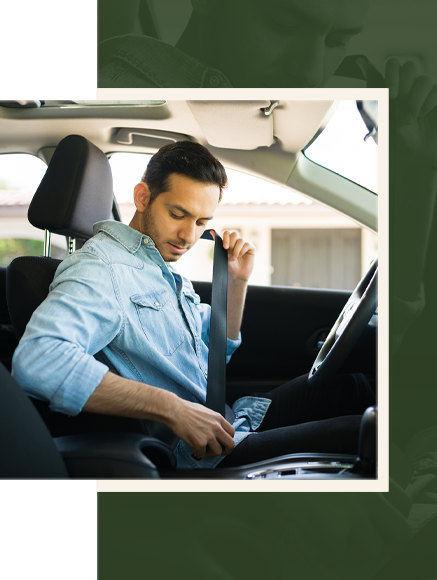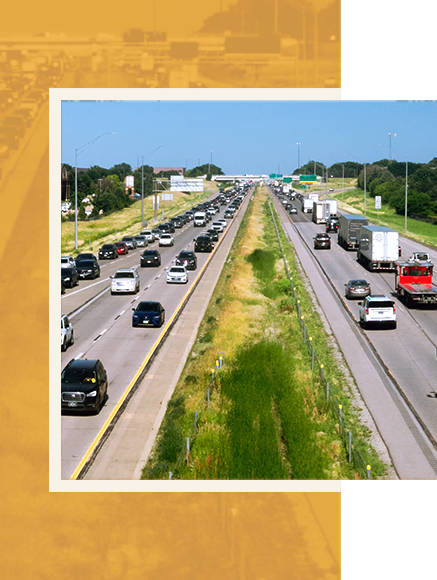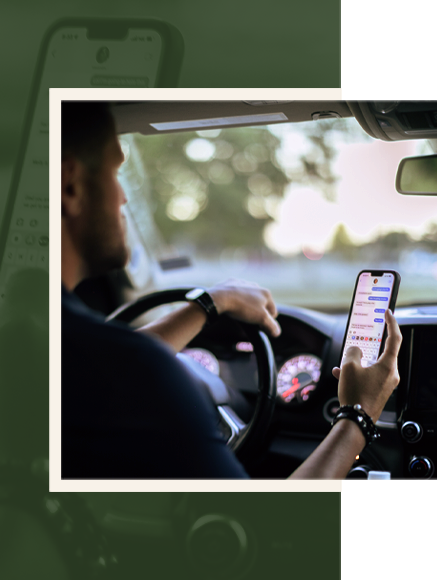

Unbuckled people account for nearly half of our state’s highway fatalities. That's a startling statistic considering research that shows the vast majority of front-seat passengers in Iowa buckle up. What drives you to buckle up?


Imagine this: You’re 10 minutes late for work and decide to drive a little over the speed limit to make up some time. You’re minutes from work when you see a signal light up ahead of you turn yellow. You’re already late and so you step on the gas. You really weren’t close enough to make it, but there’s no time to spare. Your heart begins to race as you fly through the intersection just after the light turns red.
This is just one example that happens every day. Sometimes there is no crash and everyone goes about their business like nothing ever happened.
Recognizing the behavior is the first step to changing it. Here are some other tips:
If you have to ask yourself if you’re OK to drive, you’re not OK to drive. Is it a false sense of security that drives you to get behind the wheel after a few drinks?


Whatever drives you to take your eyes, hands, and mind off safely driving your vehicle puts you, and those you’re sharing the road with, in danger. Instead of focusing on distractions that can harm you and others, focus on the things that drive you to get home safely.
 Unbuckled people account for nearly half of our state’s highway fatalities. That’s a startling statistic considering more than 93 percent of front-seat passengers in Iowa buckle up. What drives you to buckle up?
Unbuckled people account for nearly half of our state’s highway fatalities. That’s a startling statistic considering more than 93 percent of front-seat passengers in Iowa buckle up. What drives you to buckle up?
 Imagine this: You’re 10 minutes late for work and decide to drive a little over the speed limit to make up some time. You’re minutes from work when you see a signal light up ahead of you turn yellow. You’re already late and so you step on the gas. You really weren’t close enough to make it, but there’s no time to spare. Your heart begins to race as you fly through the intersection just after the light turns red.
Imagine this: You’re 10 minutes late for work and decide to drive a little over the speed limit to make up some time. You’re minutes from work when you see a signal light up ahead of you turn yellow. You’re already late and so you step on the gas. You really weren’t close enough to make it, but there’s no time to spare. Your heart begins to race as you fly through the intersection just after the light turns red.
This is just one example that happens every day. Sometimes there is no crash and everyone goes about their business like nothing ever happened.
Recognizing the behavior is the first step to changing it. Here are some other tips:
 If you have to ask yourself if you’re OK to drive, you’re not OK to drive. Is it a false sense of security that drives you to get behind the wheel after a few drinks?
If you have to ask yourself if you’re OK to drive, you’re not OK to drive. Is it a false sense of security that drives you to get behind the wheel after a few drinks?
 Whatever drives you to take your eyes, hands, and mind off safely driving your vehicle puts you, and those you’re sharing the road with, in danger. Instead of focusing on distractions that can harm you and others, focus on the things that drive you to get home safely.
Whatever drives you to take your eyes, hands, and mind off safely driving your vehicle puts you, and those you’re sharing the road with, in danger. Instead of focusing on distractions that can harm you and others, focus on the things that drive you to get home safely.